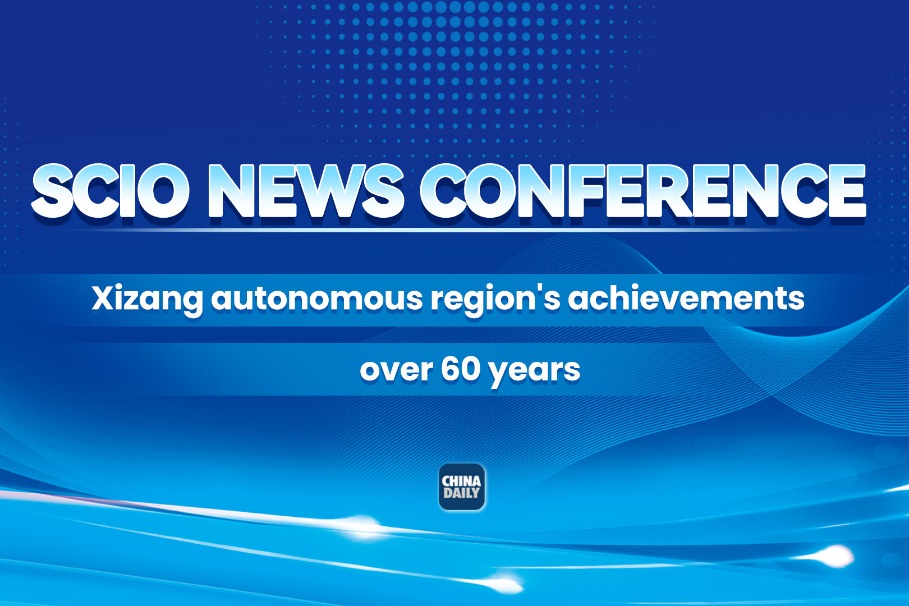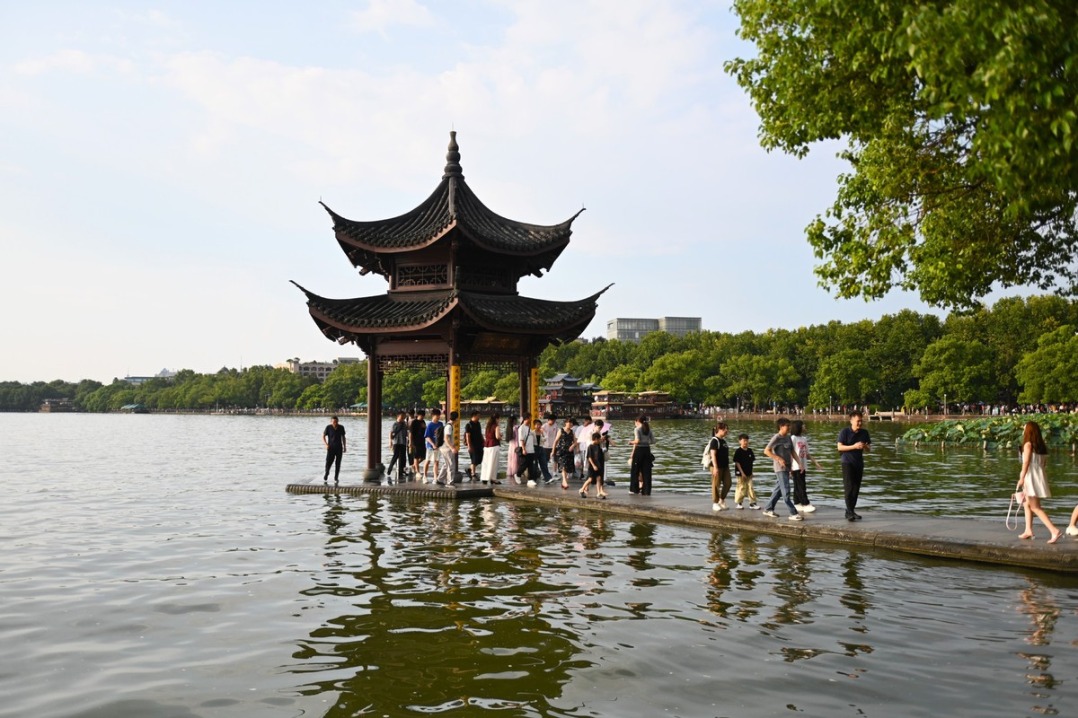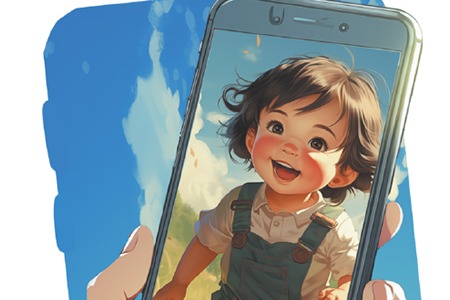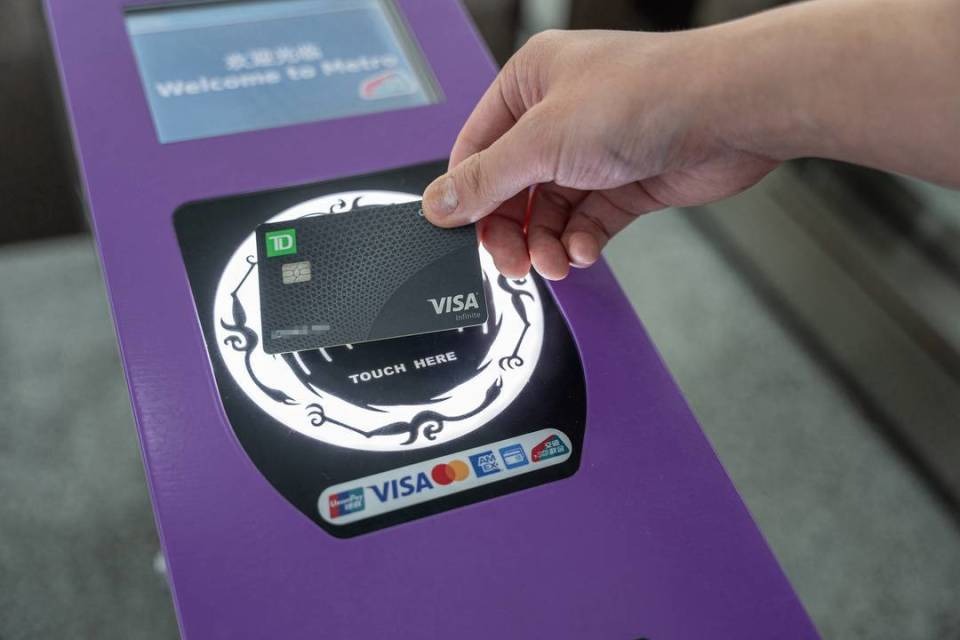Golden oldies still shine in modern era

Jeweler Lao Feng Xiang and other iconic local brands are plotting international expansion
Shanghai jewelry brand Lao Feng Xiang opened a 400-square-meter store on Fifth Avenue just before Christmas. Its neighbors now include Tiffany, Cartier and Bvlgari.
Since the New York branch launched on Dec 5, overseas Chinese have been flocking there to snap up its traditional accessories, many of them made of gold, and other pieces designed to suit more Western tastes. The brand is over 150 years old.
| Old Shanghai jewelry brand Lao Feng Xiang now rubs shoulders with Tiffany and Cartier on Fifth Avenue. Photos provided to China Daily |
The gold-colored store, Lao Feng Xiang's second outside China, shows a mix of both Chinese and American culture in terms of its design, says spokesman Wang Ensheng.
In Chinese culture, the phoenix (feng) is the king of all flying creatures. It generally denotes good luck. It is a fitting emblem for a brand that has flown to the top of the domestic jewelry market.
It is one of more than 220 time-honored Shanghai brands. Like the vast majority, it has experienced dramatic swings in fortune. Like a select few, it continues to hold Chinese consumers in the palm of its hand.
As one of the nation's key business hubs, Shanghai has the largest number of time-honored brands in China. They range from snack food and clothing to make-up, stationery and traditional Chinese medicine.
Most have a rich and colorful history, a high quality of craftsmanship and star products that give them a market edge.
More than 70 percent of local Shanghainese remain loyal to the brands of their childhood, surveys show. They prefer Bright products (food and dairy) to imported goods, and like wearing Three Guns underwear instead of foreign brands, according to Jiang Weihong, a researcher from the Shanghai Academy of Social Sciences who specializes in studying brands.
Currently Shanghai's Lao Feng Xiang accounts for about 95 percent of the parent company's sales revenue. It contributed to 90 percent of profits last year.
The brand has expanded from a few dozen branches a decade ago to more than 2,800 stores last year. Sales revenue grew 45-fold from 2001 to 32.98 billion yuan ($5.28 billion) in 2013, accounting for 11.34 percent of the domestic market.
Over the same period, profits surged by many more times. Last year, when an industry lull set in, it still outperformed many of its peers.
Encouraged by the success of its two stores in Sydney and New York, it will soon open another branch in Vancouver. Three more are due to open in Hong Kong this year. Others, in the UK and New Zealand, are in the pipeline.
Based on Wang's calculations, annual revenue of 10 billion yuan from its overseas markets is a realistic target within five years.
Sink or swim
Despite this, many brands are losing their luster. Only about 10 percent remain profitable. Some 70 percent can make ends meet, while two in 10 have closed down after years in the red, according to a city survey.
"Broadly speaking, whether we admit it or not, most of the city's aged brands are going down due to poor advertising choices and a lack of innovation," says Jiang.
Most have followed the same basic business curve: They were nationalized after 1949, when new China was born, they peaked in the 1950s or 1960s, experienced a slump the following decade, then saw business pick up again in the 1980s.
Their performances began to diverge after new domestic brands joined the market along with mature global brands.
According to Jiang, the old brands once boasted the latest technology and most sophisticated techniques but have since failed to keep pace with the changing times.
Official statistics show there were more than 16,000 old brands across the nation in 1950. This number dwindled to 1,600 in 1990. As of 1996, only a few hundred were recognized as time-honored brands by the Ministry of Commerce.
Beijing-based Wangmazi Scissors used to be an industry leader in China. But the brand, which is over 350 years old, went bankrupt in 2003 after it found itself saddled with debt.
Varying business models saw the brands follow different development paths during the 1980s and 1990s.
"Every success story is unique, but they were all based on prudent decision-making by their management in an ever-changing business environment," says Jiang.
Some brands are trying to upgrade their products to suit a higher-end market.
Shuang Mei ("Twin Sisters"), a cosmetics brand known for its logo featuring two girls, was established in 1898. Its popularity peaked in the 1930s, when movie actresses Hu Die and Zhou Xuan could regularly be seen using its products. It then got eclipsed as World War II broke out, followed by years of social upheaval.
In August 2010, Shanghai Jahwa United Co Ltd, now the country's largest manufacturer of cosmetics and personal healthcare products, decided to bring the brand back.
It produced high-end beauty products for fashionable women and opened a new flagship store at the Fairmont Peace Hotel on the Bund, site of the iconic Shanghai riverfront.
"Chinese consumers have increasing purchasing power and their shopping preferences are changing," says Xiao Lie, deputy general manager of Shanghai Vive Business Co Ltd.
"As a homegrown company, Shanghai Jahwa needed a flagship high-end brand. This naturally fell on the shoulders of Shuang Mei, which used to be known internationally."
Warrior, a well-known brand of athletic shoes dating back to 1927, is trying to restore its former glory. Gui Chenggang, Warrior's executive director, says he was inspired by actor Orlando Bloom, who wore a pair of Warriors while filming the movie New York, I Love You in 2008.
Sniffing out a business opportunity, Gui decided to develop more new products to attract the younger generation. It proved the right move at the right time.
After combining the retro classic look with new trends Warrior saw its annual revenue triple from 200 million yuan in 2010 to over 600 million yuan in 2013. It experienced another growth spurt to hit 700 million yuan last year.
"After combing the narratives of Shanghai's famous brands, we found that those which have kept developing, and which strive to stay unique and creative, will always be welcomed by the market," says Jiang.
"Those that deviate from this path are likely to encounter great hurdles."
"The big European brands teach us that it is important to develop consistently and have a leader with an international vision," he says.
wang_ying@chinadaily.com.cn
| A 24-karat gold bracelet featuring dragon and phoenix iconography has proven a best-seller in Lao Feng Xiang's stores. |
| Shanghai Vive, a cosmetics brand with an iconic logo featuring two women, was relaunched in 2010. It is over a century old. |
(China Daily Africa Weekly 04/10/2015 page14)

































